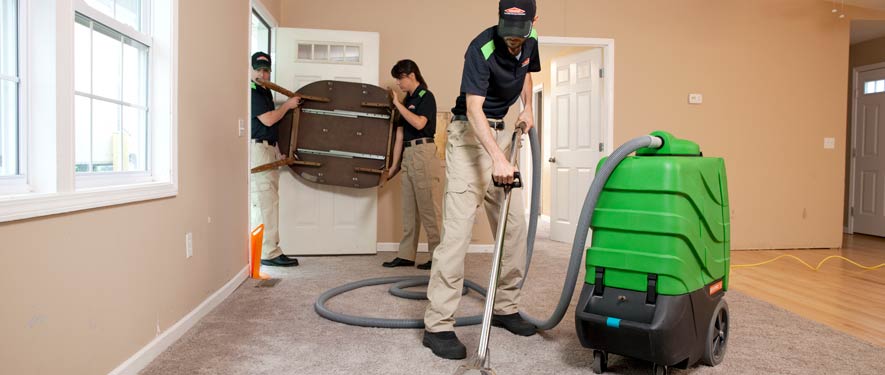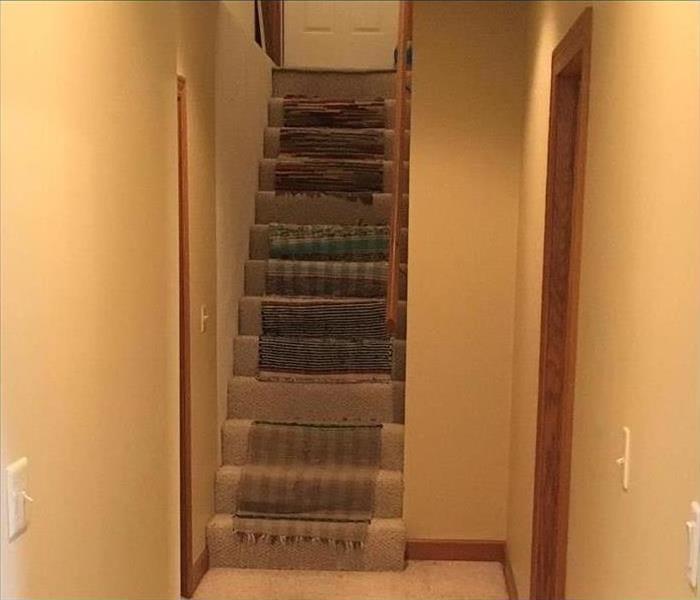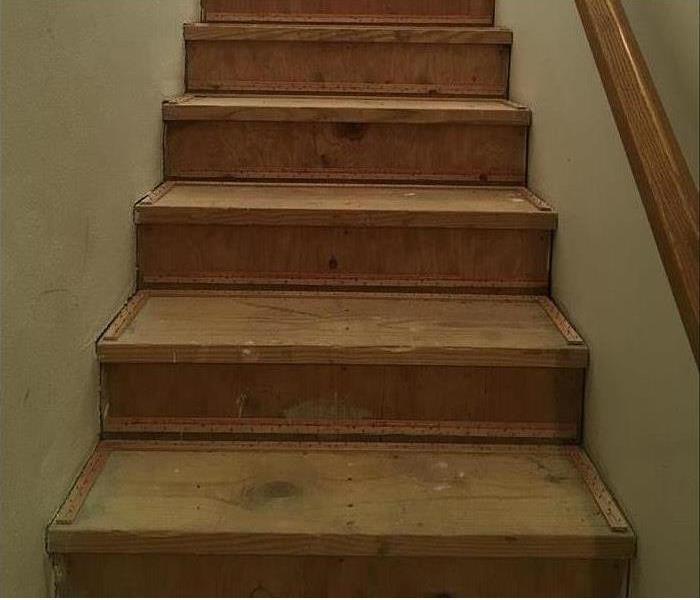
Step 3: Water Removal / Water Extraction
Shreveport House and Water Extraction
Now that we have arrived at the Shreveport house to grapple with the water loss, our customer is relieved to see our SERVPRO team off-loading water removal equipment. Since our operational plan has been devised, the first step is to extract as much liquid water as possible, can begin.
The Volume of Water Removal Is Crucial to Restoration
The amount of water, in gallons or location, directs us to select the most expedient manner of extraction. For large volumes of standing water, we can utilize our truck-mounted, independently powered, pump for removal. We may direct the unwanted water into a nearby drainage system or our holding tank. Our WRT water restoration technicians can break up into groups to relocate fixtures and furnishings from the water loss areas of the structure. For significant water damage, we can transport the contents to our off-site facility for storage, cleaning, and drying. We can use a tagging system and barcode scanning to catalog the inventory for security and re-setting to their original places in the dried and restored Shreveport rooms, "Like it never even happened."
Our arsenal of:
• Water Extractors
• Air Movers
• LGR dehumidifiers
All play a role in accomplishing our goal--to swiftly restore our customers' home to its preloss condition, always trying to salvage items and building elements, rather than replacing them. We know how to save carpets and subflooring, whether a concrete pad or wood.
Move-Out / Pack-Out
If your home requires extensive restoration or cleaning, SERVPRO of South Shreveport, Bossier can conduct an organized, efficient move-out to protect your belongings from further damage.
- Move-Out Service
Emergency Water Removal
Our highly trained technicians will begin the water removal process almost immediately. Depending on the amount of water, we may use powerful submersible pumps in addition to industrial strength, wet/dry vacuums. Removing most of the water helps reduce drying time and helps prevent secondary water damage and mold and bacterial growth.
- Remove Excess Water
- Use Submersible Pumps and Industrial Wet/Dry Vacuums
Inspect the Carpet Pad and Carpet
We inspect the carpet and pad and determine if they should be removed to protect the subfloor.
- Inspect Carpet Pad and Remove If Needed
- Inspect Carpet and Remove If Needed
Water Removal Equipment
- Moisture detectors, hygrometers, and other meters measure the extent of moisture saturation.
- Infrared cameras may be used to find “hidden” water behind walls and ceilings.
- Submersible and gas-powered pumps are used for continuous pumping of high-level water.
- Truck-mounted and portable extraction units perform efficient water removal.






 24/7 Emergency Service
24/7 Emergency Service




